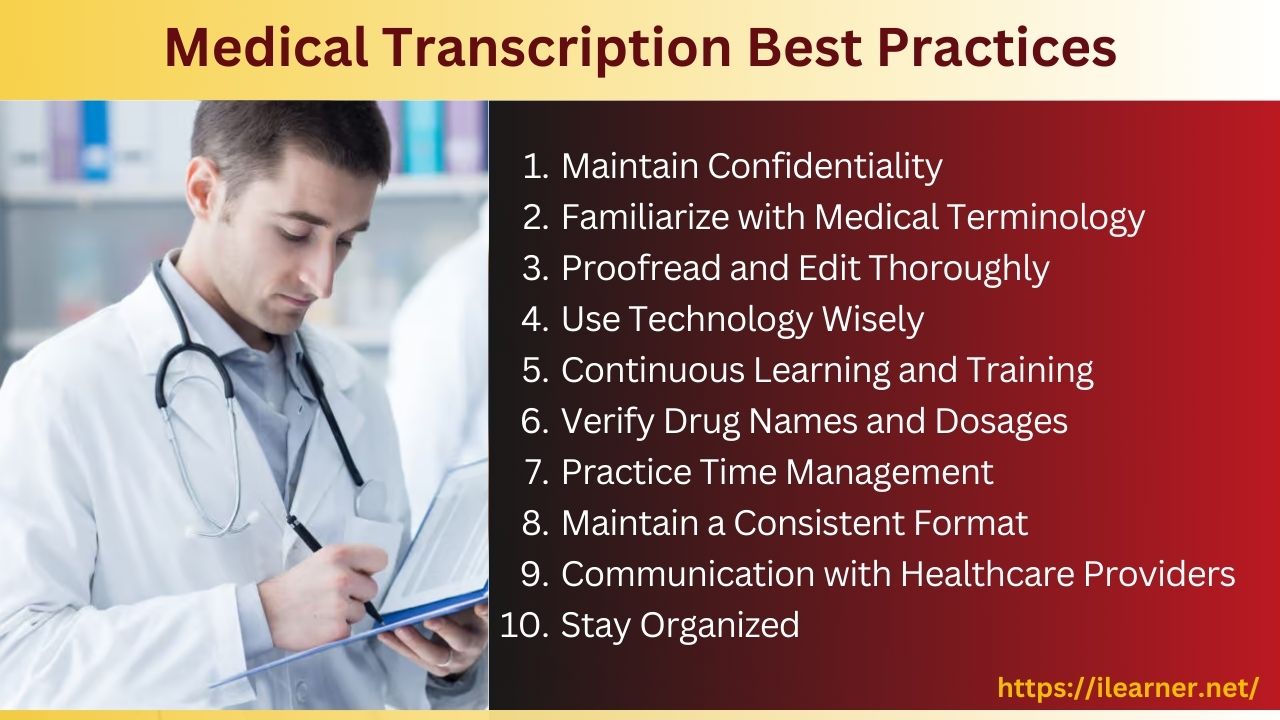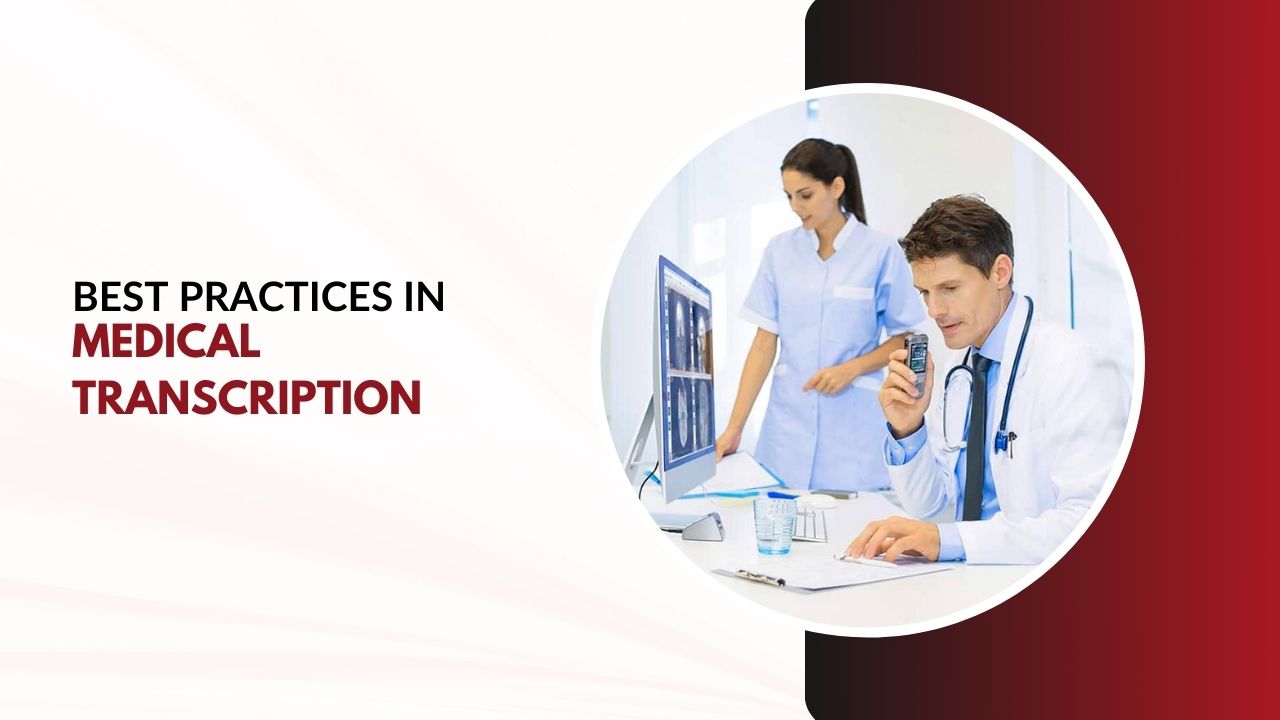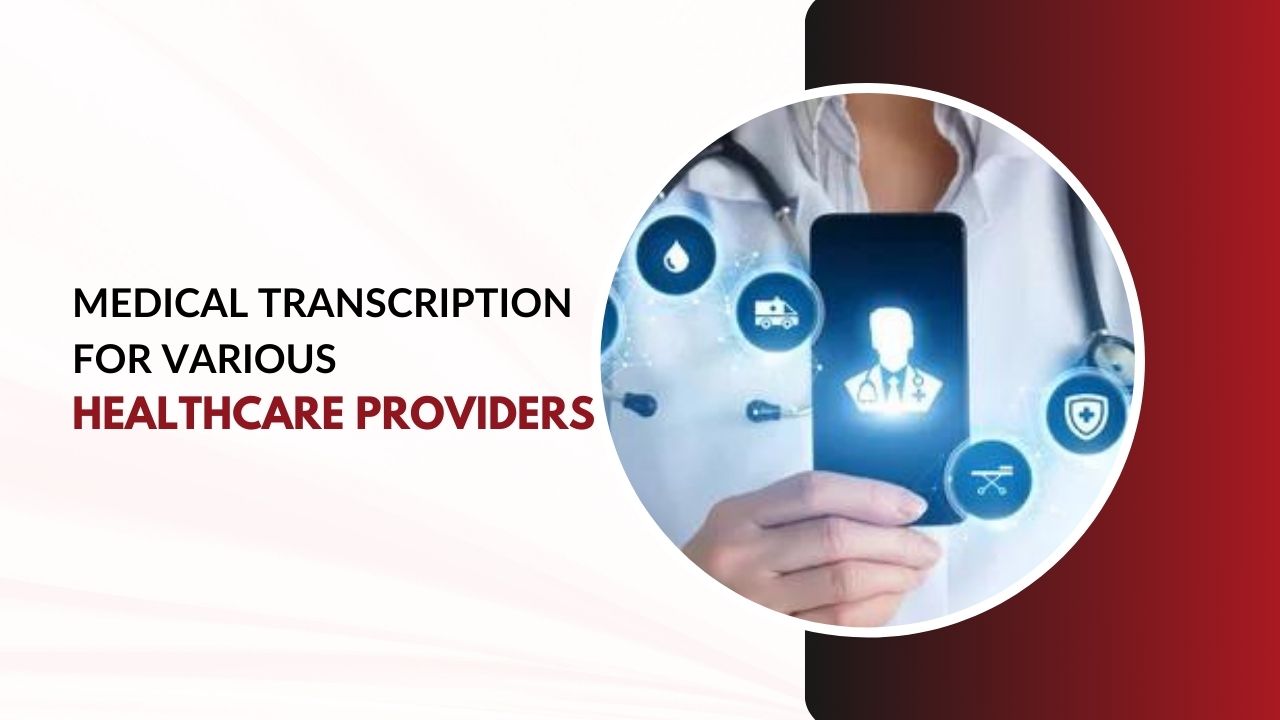Medical transcription is a vital part of the healthcare industry, as it involves converting healthcare professionals’ spoken words into written medical documents. Accuracy and precision are of utmost importance in this field, as even a small error can have serious consequences for patients.
In this article, we will explore some best practices for medical transcription, ensuring that patient information remains confidential and medical records are impeccable.
Medical Transcription Best Practices
In this section, we’ll explore a set of invaluable expert tips to help you excel in your daily transcription work and ensure accuracy and efficiency.

1. Maintain Confidentiality
Confidentiality is a cornerstone of medical transcription. Transcriptionists must adhere to the Health Insurance Portability and Accountability Act (HIPAA) regulations, which mandate strict protection of patients’ personal and medical information. Always work in a secure environment, use encrypted software, and avoid discussing patient cases with anyone not involved in their care.
2. Familiarize with Medical Terminology
Medical transcriptionists should have a solid understanding of medical terminology. This knowledge is vital for accurately transcribing doctors’ notes and diagnoses. Familiarize yourself with the various medical prefixes, suffixes, and root words to comprehend the context and content of the dictation.
3. Proofread and Edit Thoroughly
After transcribing a document, it is crucial to proofread and edit it carefully. This step helps eliminate errors in medical transcriptions, ensuring that the final transcript is accurate and free from any inconsistencies. Pay close attention to grammar, punctuation, and formatting.
4. Use Technology Wisely
Technology plays a significant role in medical transcription. Use specialized software and transcription tools to enhance your efficiency and accuracy. These tools can help with spell-check, auto-formatting, and quick access to medical dictionaries. However, remember that technology is a tool, not a substitute for your expertise.
5. Continuous Learning and Training
Medical transcription is an ever-evolving field. Stay up-to-date with the latest medical guidelines, procedures, and technology. Attend workshops and training programs to improve your skills and stay relevant in the industry.
6. Verify Drug Names and Dosages
When transcribing medication information, it is crucial to double-check drug names and dosages. Errors in this area could have severe consequences for patient health. Always verify this information and cross-reference with your medical dictionaries.
7. Practice Time Management
Effective time management is essential for medical transcriptionists. Prioritize your tasks and meet deadlines consistently. Prolonged transcription times can delay patient care and the medical workflow. Use templates and shortcuts to save time without compromising quality.
8. Maintain a Consistent Format
In medical transcription, consistency is key. Ensure that your transcripts follow a standard format that is easy to understand. Consistency in formatting makes it easier for healthcare professionals to review and update patient records.
9. Communication with Healthcare Providers
Communication with healthcare providers is vital. If you encounter unclear or ambiguous dictations, don’t hesitate to seek clarification from the healthcare professional. It’s better to confirm information to avoid mistakes rather than making assumptions.
10. Stay Organized
Maintaining organizational skills is crucial for effective medical transcription. Keep accurate records of patient files, dictations, and completed transcripts. An organized workspace can enhance productivity and reduce the risk of errors.
Importance of medical transcription best practices
The importance of following best practices in medical transcription cannot be overstated. It’s a critical part of healthcare that involves turning spoken words into written records, and getting it right matters a lot. Accuracy in transcription is not just about paperwork; it’s about patients’ safety and the quality of their care.If we make mistakes in transcribing medical information, like wrong dosages or misunderstood diagnoses, patients could get harmed.
It can also lead to legal problems and affect a healthcare provider’s reputation. And it’s not just about patients; doctors and nurses need clear and accurate records to make informed decisions and provide the best care. Good transcription practices help everyone in the healthcare system work together smoothly, leading to better patient care, efficient operations, and trustworthy medical research. So, it’s not just about following rules; it’s about ensuring patients get the best care possible.
Consequences of Medical Transcription Errors
Medical transcription errors can have significant consequences, including:
Patient Safety: Errors in transcription can lead to incorrect treatment, medication, or diagnosis, putting the patient’s safety at risk.
Legal and Ethical Issues: Inaccurate medical records may lead to legal and ethical challenges for healthcare providers and institutions.
Miscommunication: Errors can hinder communication among healthcare professionals, leading to misunderstandings and delays in patient care.
Quality of Care: Inaccurate records can impact the overall quality of patient care and treatment outcomes.
Conclusion
In conclusion, medical transcription is a crucial part of the healthcare industry, contributing to accurate patient records and effective communication among healthcare professionals. By following these best practices, you can ensure that your medical transcription work is accurate, efficient, and compliant with healthcare regulations.
Always prioritize patient confidentiality and strive for excellence in this important field. To reduce errors, it’s essential to focus on clear communication, careful proofreading, and ongoing training and education within the field of medical transcription.
Also Read:




